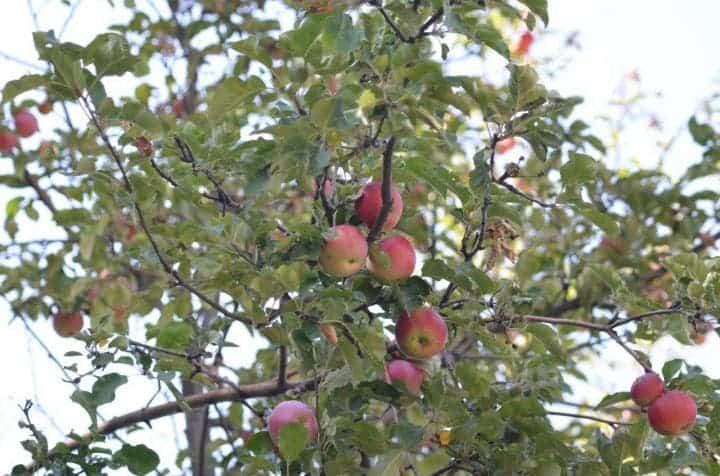
Apples are perhaps the most familiar fruit in the world but have you ever stopped to wonder how these delicious treats appeared? The path apples had to take from their humble wild origins, thousands of years ago, to farmer’s markets around the world was quite complicated — but also very interesting. Unlike other crops that humans have domesticated, today’s sweet apples are owed to extinct megafauna, as well as Silk Road traders, scientists write in a new study.
Big mammals and human traders
Apples have occupied an important role in humans’ diets since ancient times. We know from art depictions that humans had domesticated the fruits in southern Europe from at least 2,000 years ago. What’s more, ancient seeds found at archaeological sites suggest that humans had been foraging wild apples in Europe and West Asia for more than 10,000 years.
Previously, scientists performed genetic studies establishing that the modern apple is a hybrid of at least four wild apple populations. But how did these different types of apples interact in the first place? According to archaeological evidence, in the form of apple seeds discovered at various sites across Eurasia, apples, as well as other fruit and nut trees, were among the commodities that moved on the Silk Road. To support this hypothesis, much of the modern apple’s genetic material can be traced back to the Tien Shan Mountains in Kazakhstan, an important node in the ancient trade route.
But even long before the Silk Road was founded, the course of apple breeding and evolution was shaped by another major selective force — and it wasn’t humans. Writing in a new study, researchers led by Robert Spengler of the Max Planck Institute for the Science of Human History, documented the processes that set the stage for the modern apple’s domestication.
“Seeing that fruits are evolutionary adaptations for seed dispersal, the key to understanding fruit evolution rests in understanding what animals were eating the fruits in the past,” Spengler explains.
Other fruiting plants in the same family as the apple, known as Rosaceae, generally have small fruit (cherries, roses, raspberries etc). These small fruits are advantageous because they can be easily swallowed and dispersed by birds. However, apples, as well as pears, quince, and peaches, evolved large fruits that were too large for birds to disperse their seeds. According to Spengler, the role of apple seed disperser fell onto large animals, particularly European megafauna such as wild horses or large deer who were attracted by the fruit.

Spengler and colleagues back their claims with evidence of weak dispersal of wild apple seeds during the past 10,000 years — a period when megafauna became extinct. What’s more, wild apple populations have moved very little over glacial zones of the Ice Age, suggesting that the plants had been moving over long distances in the absence of seed-spreaders.
[panel style=”panel-success” title=”What is megafauna and what happened to it? ” footer=”Credit: American Museum of Natural History”]You’ve probably heard of woolly mammoths and giant ground sloths—but what about a gorilla-sized lemur and 500-pound birds? Ross MacPhee uses colorful illustrations to take us on a journey back in time to the world of the now extinct “megafauna,” and explains what scientists think may have happened to them.
[/panel]
Without megafauna to move them, wild apple tree populations stayed isolated after the last Ice Age. But then humans started foraging the fruit, moving them across Eurasia along the Silk Road. The traders brought various lineages into contact, causing hybridization. These hybrids produced large fruits — a common trait of hybridization — and humans started to fixate this trait in place through grafting and selecting cuttings of the most favored trees.

Both of these major forces — hungry megafauna and exploring human traders — shaped the modern apple that we all know and hold dear. The most intriguing part of the study, however, lies in the fact that it shows that domestication isn’t a clear-cut process. Rather than employing a long and tedious selection and propagation process, modern apples appeared quickly thanks to hybridization.
“The domestication process is not the same for all plants, and we still do not know much about the process in long-generation trees,” notes Spengler. “It is important that we look past annual grasses, such as wheat and rice, when we study plant domestication. There are hundreds of other domesticated plants on the planet, many of which took different pathways toward domestication.”
The findings appeared in the journal Frontiers in Plant Science.


